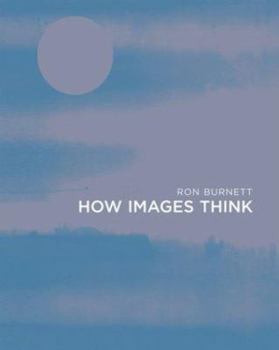How Images Think
Select Format
Select Condition 
Book Overview
Digital images are an integral part of all media, including television, film, photography, animation, video games, data visualization, and the Internet. In the digital world, spectators become navigators wending their way through a variety of interactive experiences, and images become spaces of visualization with more and more intelligence programmed into the very fabric of communication processes. In How Images Think, Ron Burnett explores this new ecology, which has transformed the relationships humans have with the image-based technologies they have created. So much intelligence has been programmed into these image-dependent technologies that it often seems as if images are "thinking"; ascribing thought to machines redefines our relationship with them and enlarges our ideas about body and mind. Burnett argues that the development of this new, closely interdependent relationship marks a turning point in our understanding of the connections between humans and machines. After presenting an overview of visual perception, Burnett examines the interactive modes of new technologies -- including computer games, virtual reality, digital photography, and film -- and locates digital images in a historical context. He argues that virtual images occupy a "middle space," combining the virtual and the real into an environment of visualization that blurs the distinctions between subject and object -- part of a continuum of experiences generated by creative choices by viewers, the results of which cannot be attributed either to images or to participants.
Format:Hardcover
Language:English
ISBN:0262025493
ISBN13:9780262025492
Release Date:January 2004
Publisher:MIT Press (MA)
Length:253 Pages
Weight:1.55 lbs.
Dimensions:1.0" x 7.2" x 9.1"
Customer Reviews
5 ratings
Great book -- a must-read
Published by Thriftbooks.com User , 19 years ago
Ron Burnett's "How Images Think" is a major contribution to the current discussion surrounding images and the digital universe, and is essential reading for anyone interested in thinking about the implications of our relationship to analog and digital media. The book itself is gorgeously designed, with a luminous cover; each chapter is absorbing, and the reading experience is enhanced by the inclusion of additional sidebar comments/text, and interesting photographs. Most importantly, the text is full of intelligent and honest ideas about the contemporary process of interacting with images. It is academic and personal, complex and readable. The author's discussion of the internet as a "gateway" that transforms the computer from a device into a portal (ref. Chapter 6 "Humans--Machines"), is very astute, as are his thoughts on how current discussions of mind/consciousness often draw on metaphors used in computer science and engineering. A great book, overall, which I recommend to all.
One of the best books I have read in a while
Published by Thriftbooks.com User , 21 years ago
What a wonderful experience! This books is both personal and critical. I was impressed with the author's range of knowledge and desire to bring new ideas to the reader. His range is wonderful!!
Great book
Published by Thriftbooks.com User , 21 years ago
The author's breadth really impressed... a handsome book, well-written, well-designed. The cover is unique. The book should be excellent for college level courses. I loved reading it.
Like Roland Barthes
Published by Thriftbooks.com User , 21 years ago
The first chapter of this book examines a photograph taken by theauthor. He use the photo to meditate on the Holocaust. It remindedme of the work of Roland Barthes. Overall, a great book!
Opens a Window
Published by Thriftbooks.com User , 21 years ago
How Images Think is a must read for those who create, work with and consumer images today.The author opens a window very wide and asks us to consider, with him, the changes and the effects technology continues to have on the act of representation.





